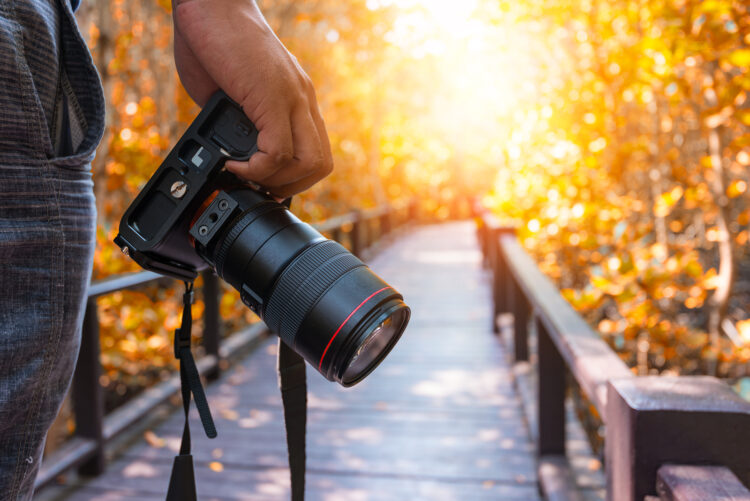Although there are many types of cameras on the market, nothing is more popular than the DSLR when it comes to advanced, interchangeable-lens models. Its name is practically synonymous with “professional camera,” but there is a wide variety of DSLRs adapted for different users, from amateurs to professionals.
In recent years, the popularity of DSLRs has waned with the rise of more minimalist cameras. However, in this guide, we explain why they are so important. Find out what a DSLR camera is and all its advantages.
Table of Contents
What is a DSLR?
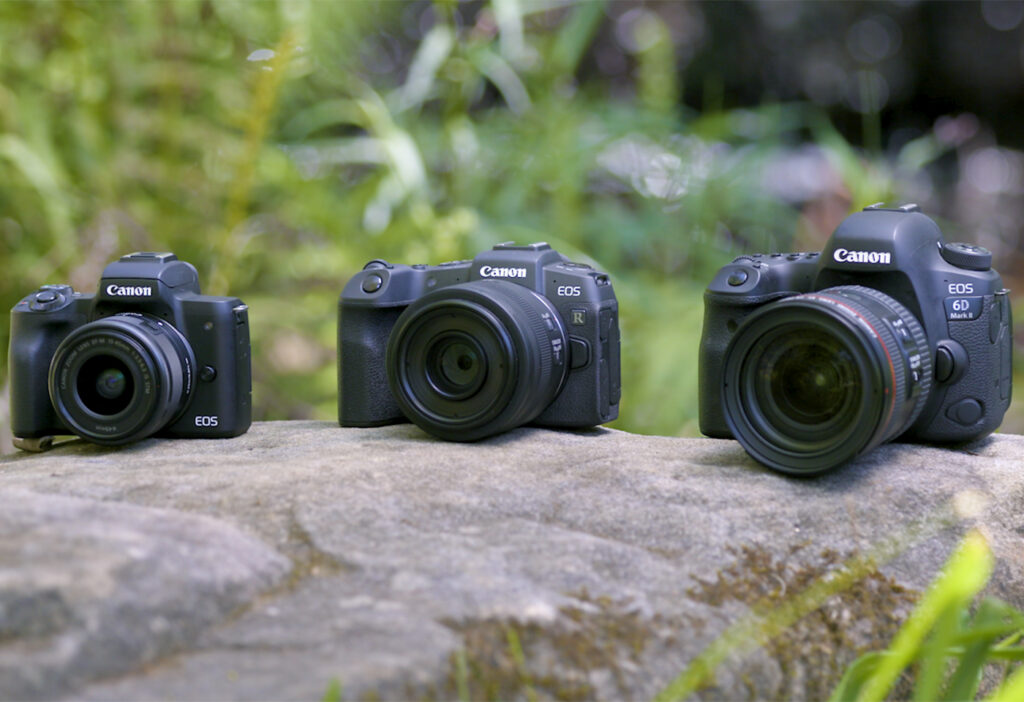
A DSLR is a single-lens digital reflex camera. Inside the camera body is a mirror that reflects the light coming from the lens towards an optical viewfinder, either by a prism (in high-end DSLRs) or a series of additional mirrors (generally in low-end models). That is how you can see what you are filming, directly through the lens, and this is where the term “reflection” comes from, referring to the reflection of the mirror.
Compared to the mirrorless camera, the advantage of this design is that you can see, in real-time, the exact scene you are going to capture through the optical viewfinder.
Also, there is no offset error or point-and-shoot issues, as there can be with instant cameras, as the sensor has to transfer what you are viewing to a different digital display elsewhere in the camera.
Another advantage is that DSLRs have exceptional battery life because the optical viewfinder consumes very little power.
TOP DSLR cameras
1.Canon EOS 1500D 24.1 Digital SLR Camera (Black) with EF S18-55 is II Lens, 16GB Card and Carry Case
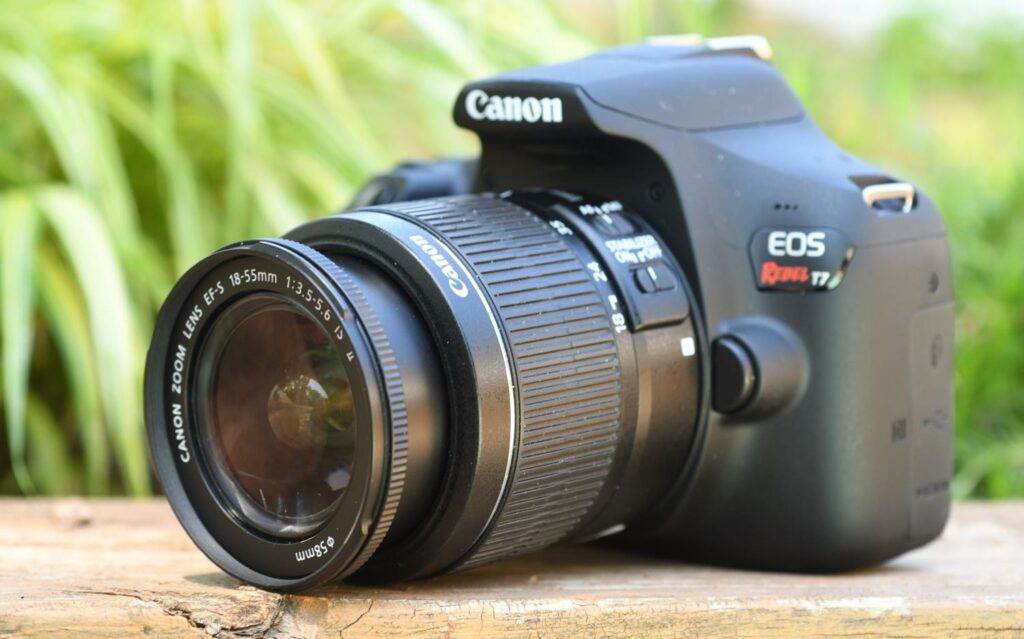
It’s a great camera and a perfect product for young budding photographers. This model can be useful for in-house, nature, functions, and spare time photography. It takes high-quality pics, videos, portrait, landscape wildlife, nature pics, etc.
The main features:
- Sensor: APS-C CMOS Sensor with 24.1 MP
- ISO: 100-6400 sensitivity range
- Image Processor: DIGIC 4+ with 9 autofocus points
- Video Resolution: Full HD video with full manual control and selectable frame rates
- Connectivity: Wi-Fi, NFC, and Bluetooth built-in
- Lens Mount: EF-S mount compatible with all EF and EF-S lenses
2. Canon EOS 5D Mark IV 30.4 MP Digital SLR Camera (Black) + EF 24-105mm is II USM Lens Kit
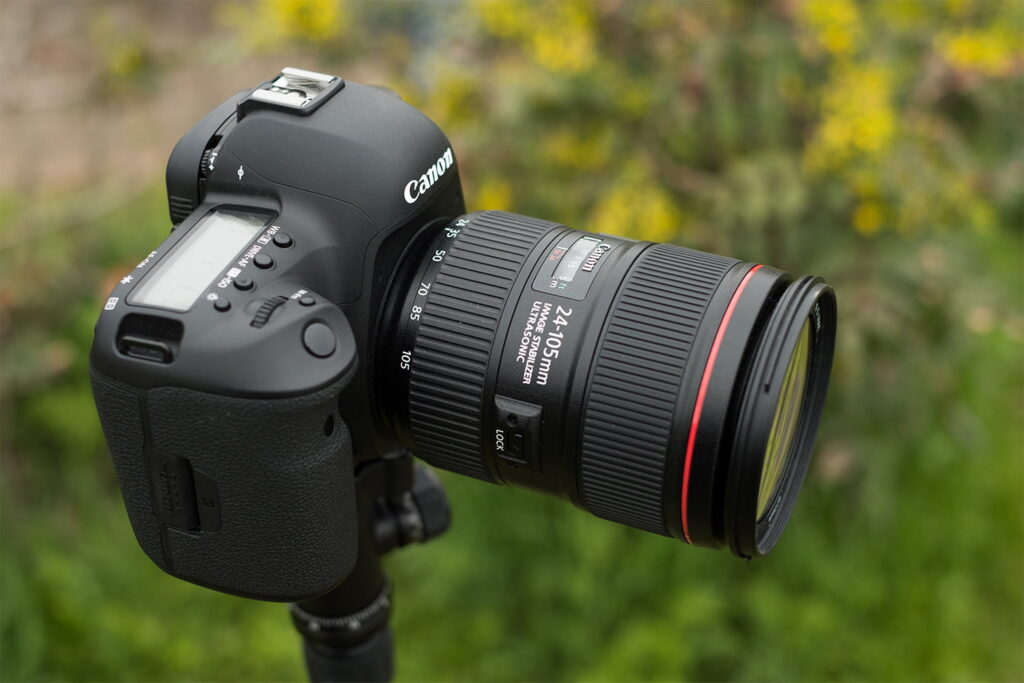
It’s a fantastic product, perfect for almost everything. Supplied accessories: battery, charger, and USB cable.
The main features:
- Sensor: Full-frame CMOS sensor with 30.4 MP (brilliant resolution for large prints and image cropping)
- ISO: 100-32000 sensitivity range (critical for obtaining grain-free pictures, especially in low light), Canon Log Capability
- Image Processor: DIGIC 6+ with 61 autofocus points (important for speed and accuracy of autofocus and burst photography)
- Video Resolution: 4K video with full manual control and selectable frame rates (excellent for precision and high-quality video work)
- Connectivity: Wi-Fi, NFC, and Bluetooth built-in (useful for remotely controlling your camera and transferring pictures wirelessly as you shoot)
- Lens Mount: EF mount compatible
3. Nikon D850 45.7MP Digital SLR Camera (Black) with AF-S Nikkor 24-120mm F/4G ED VR Lens and 64GB Memory Card
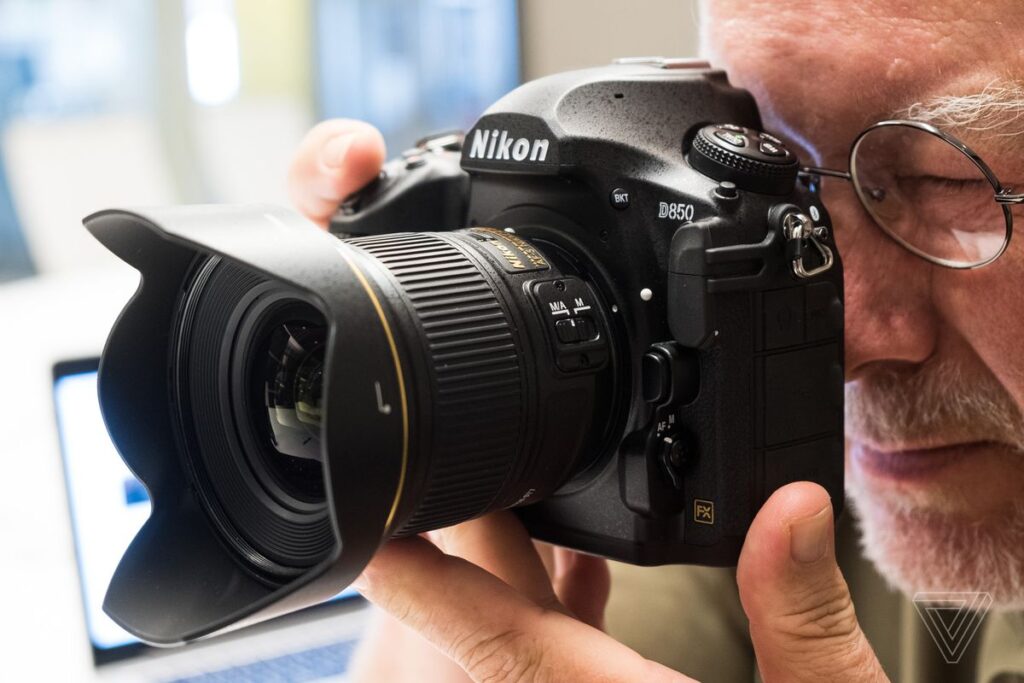
This camera can create epic film masterpieces in full-frame 4k UHD, with NIKKOR wide-angle lenses or prolong exquisite moments with its 120p/100p Full HD slow-motion recording. It’s great to use in the field of fashion, nature, sports, or wedding photography.
The main features:
- D850 with the AF-S NIKKOR 24-120MM F/4G ED VR(64GB SD included)
- Comes with battery, charger, and manual
- Country of Origin: Japan
4. Nikon D7200 24.2 MP Digital SLR Camera (Black) with AF-S DX 18-200mm VR2 Kit Lens,16 Card and Carry Case
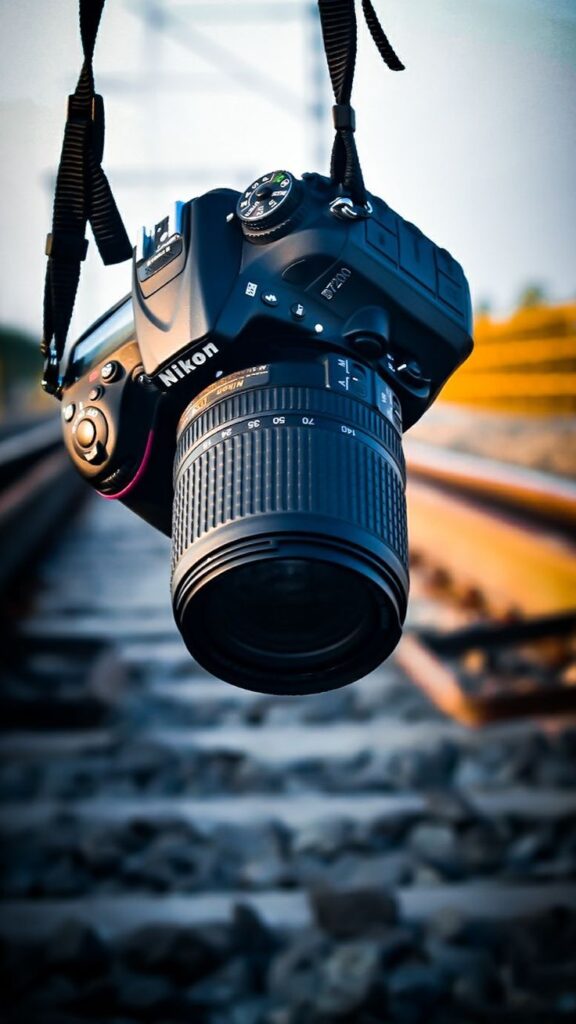
This model supports slow motion. That is a city censor camera, not a full-frame. When it comes to its box, this model contains the following: Rubber Eyecup DK-23, Body Cap BF-1B, Rechargeable Li-ion Battery EN-EL15 with terminal cover, Battery Charger MH-25a, Eyepiece Cap DK-5, USB Cable UC-E17, Strap AN-DC1 BK, and 16-GB Card, Bag. It is manufactured in Nikon Global Factory in Thailand.
The main features:
- DX-format 24.2-megapixel CMOS sensor and EXPEED 4 image-processing engine 51-point autofocus (AF) system with the new Advanced Multi-CAM 3500 II autofocus sensor+BC6 Standard ISO 100 – 25600 Authentication: Open system, WPA2-PSK The power to keep shooting – the number of shots increased to 100 (JPEG sufficient/Large) at 6 fps in continuous shooting
5. Canon EOS Rebel T7 18-55 mm f/3.5-5.6 IS II Kit
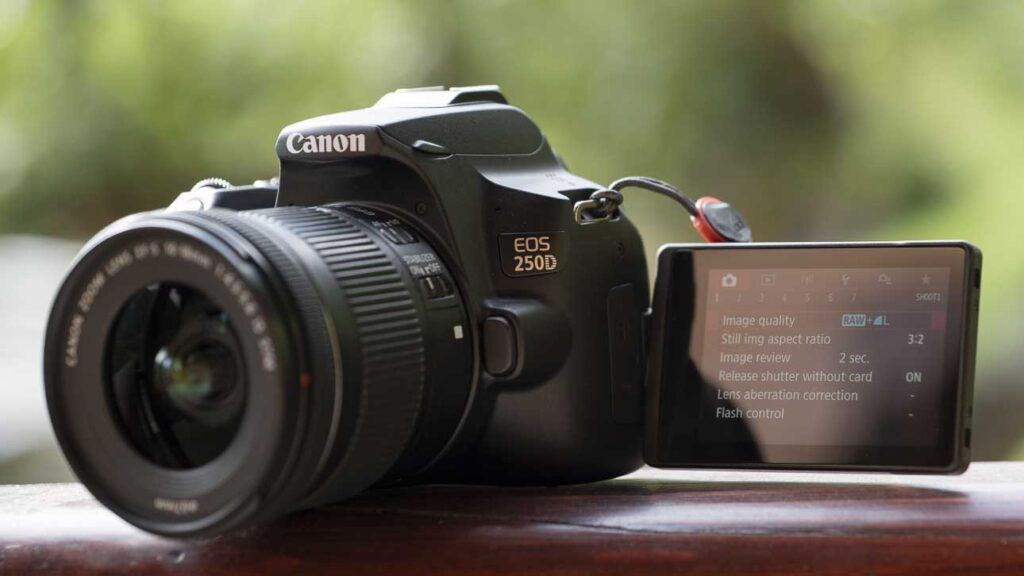
It’s a user friendly, easy to use DSLR camera for beginners and those who aren’t that much tech-savvy but need the right DSLR to make best quality pictures. It’s a great quality camera for beginners and family. Buy this, and you won’t be disappointed!
The main features:
- 1 Megapixel CMOS (APS-C) sensor with is 100?6400 (H: 12800)
- Built-in Wi-Fi* and NFC** technology
- 9-Point AF System and AI Servo AF
- Optical viewfinder with approx. 95% viewing coverage
- 0-Inch LCD with 920 000 dots.
6. Osaka Pro Series-11 Waterproof DSLR Backpack Camera Bag, Lens Accessories Carry Case for Nikon, Canon, and Olympus
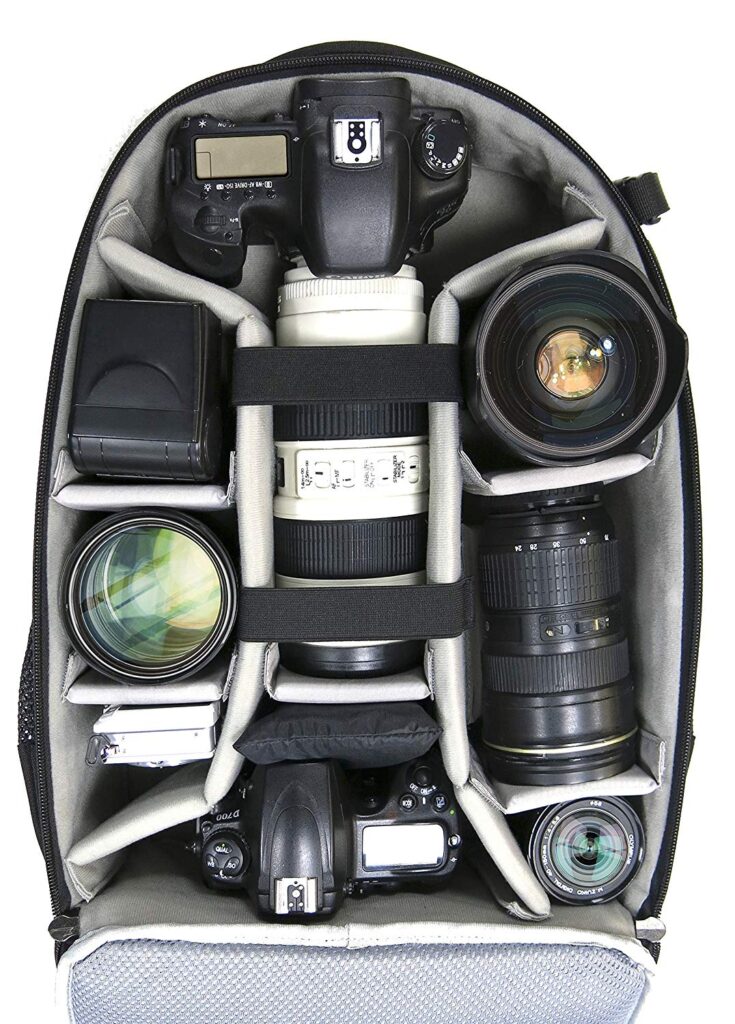
This camera is a must-buy for any professional photographer. The padding is good, and the space is enormous. It has a nice shoulder and waist straps, making it comfortable to carry. Easily carries 2 bodies with 24-105 kit lenses attached, along with 3 flashes and 3 medium to large-sized lenses, still leaving more for chargers and other little accessories. The extra pockets outside come handy for quick storage.
It can also accommodate a tab. The zips, too, are of good quality.
The main features:
- Professional photographer’s DSLR & accessory bag: Carry DSLR/SLR camera, lens, tripod, flashlight & other accessories: This hiking camera backpack is 10″ x6″ x13″ and yet lightweight, allows you to carry all kinds of equipment
- Durable, water-resistant materials: This Product is Made-in India with high-quality water-resistant nylon and polyester, durable metal zippers. This bag lets you carry your expensive equipment safely in all weathers.
- External base zipper enclosure with waterproof cover, mesh pocket & strap to carry tripod: The waterproof cover is located conveniently at the base zipper enclosure. You don’t have to open the bag in case of rain – unzip the base enclosure and pull out the cover. An adjustable strap can easily carry a tripod on one side, and a mesh pocket is ideal for holding a water bottle.
- Adjustable customizable padded dividers with various mesh pockets: You can make space according to your gear. Remove all the padded dividers if you want to use it as a regular backpack, remove the partitions and carry your stuff. You can also have cables, chargers, lens cleaners, etc. in the zipper mesh pockets.
- Twice cushioned super quality handle: The best in class twice cushioned top handle can provide maximum comfort while holding the bag from the handle.
DSLR Camera Buying Guide
Should You Buy a DSLR Camera in 2024?
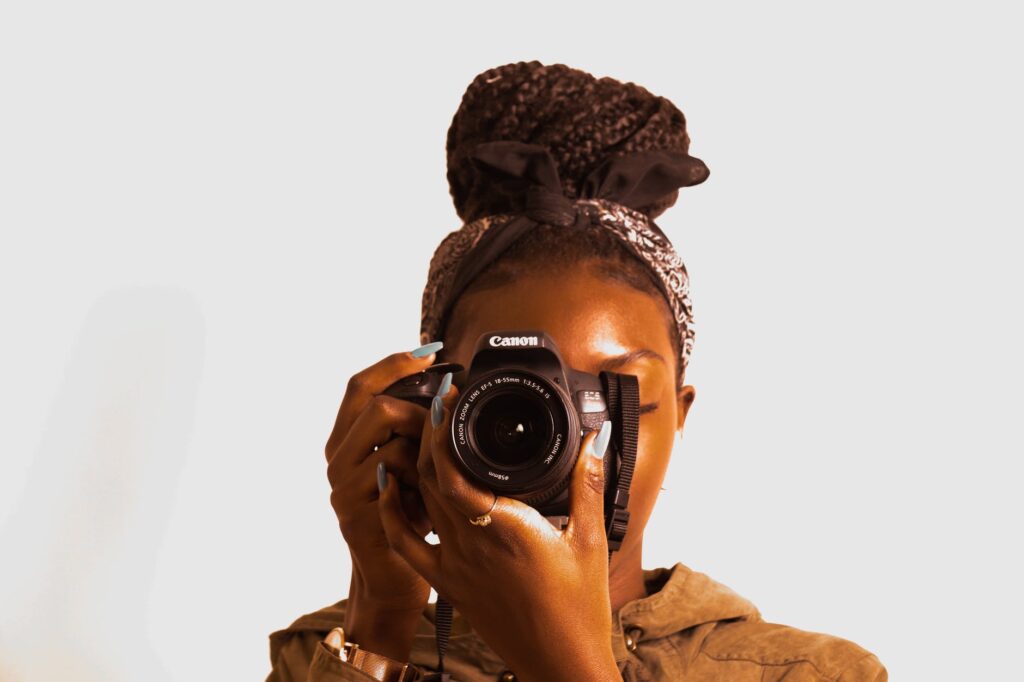
Yes, DSLR Cameras are worth buying. They have been on the market for a long time, which has allowed them to develop and offer everything the user may need.
In other words, they are well thought out cameras, which have replaced previous models, improving the problems they had and, therefore, offer the best of their technology. Consequently, they have a significant advantage over mirrorless cameras that are still evolving.
Canon vs. Nikon: Which DSLR to Buy in 2024
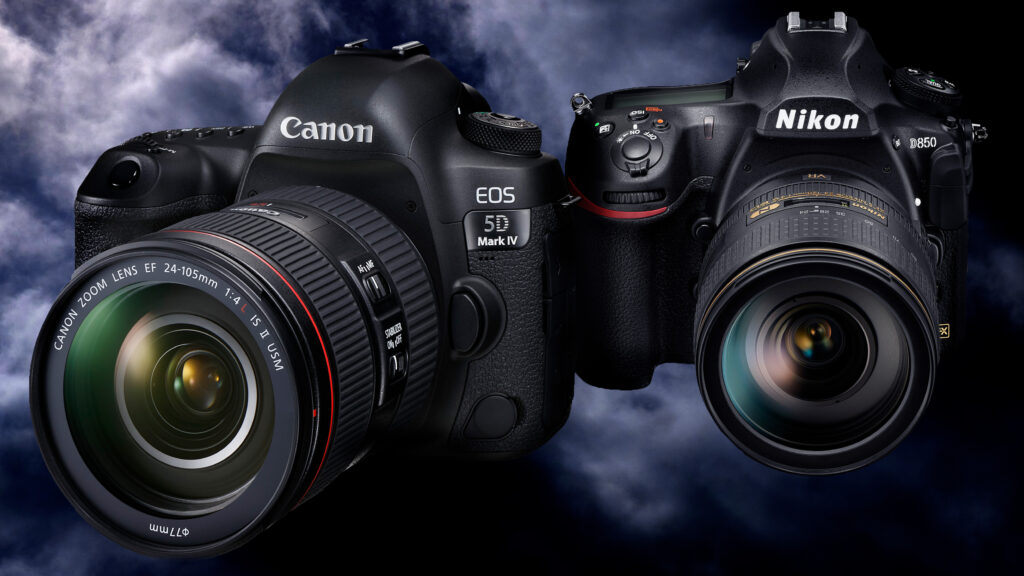
Our favorite DSLR camera tends to change from year to year. However, the Nikon D850 is our current favorite, followed closely by the Canon EOS 5D Mark IV. Still, the Canon EOS Rebel T7i is arguably the best digital SLR entry-level we’ve ever tried.
Is an Apple iPhone camera better than a DSLR?
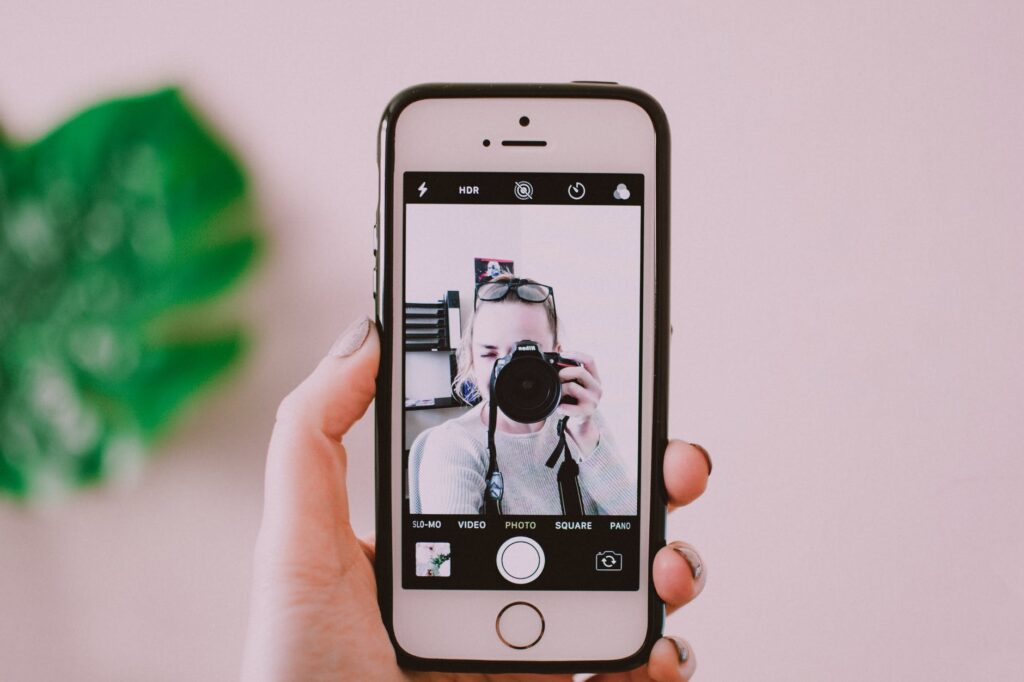
In short, not at all. After careful examination, it turned out that one of the first aspects in which a DSLR surpassed the photos with iPhone – also by some other smartphones on the market – was the lack of contrast in their shots. The Apple smartphone tends to fill in blanks, causing the image to lose the quality of detail.
Besides, although still more subjective, another aspect that differentiates the iPhone camera is its marked warmth in its shots’ temperature. That causes that in some taken images of people, the skin color loses its original tone.
However, the worst camera problem on this new iPhone is the inability to perform this ‘shallow’ effect in low light. Under these conditions, the results leave much to be desired, causing chromatic aberrations, underexposed images, and minor image distortions.
Smartphones vs. cameras: do you still need a DSLR?
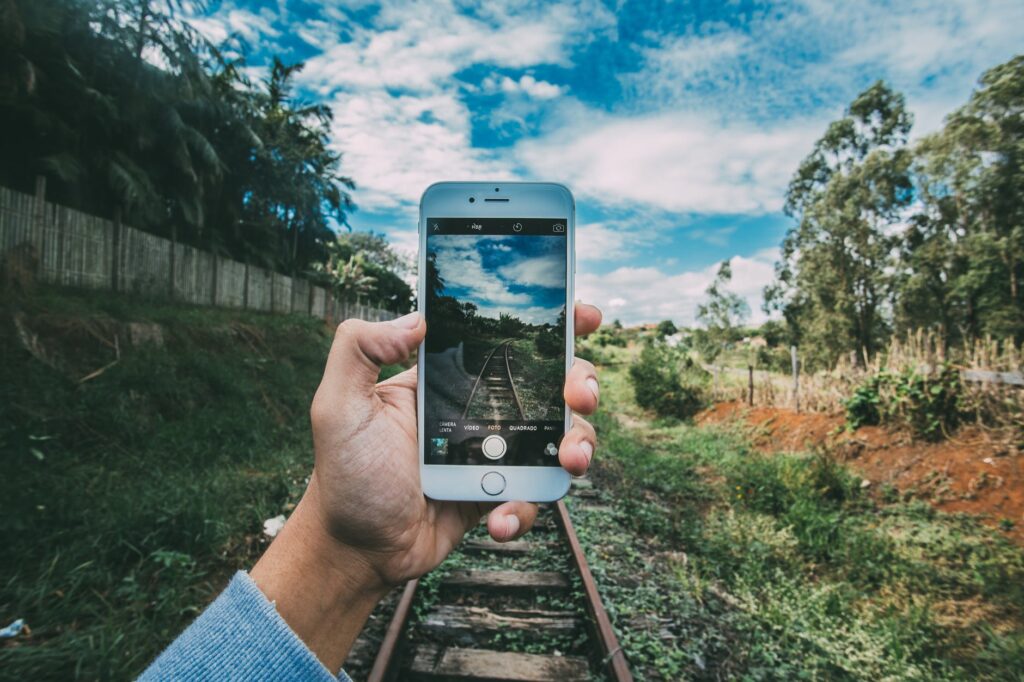
A DSLR has much larger sensors than smartphone cameras. In other words, they can let in a lot more light and produce better photos, with more dynamic range, in low-light scenarios. A DSLR will also typically give you more creative control when it comes to exposure.
What is the best DSLR camera in India under 50000 rupees?
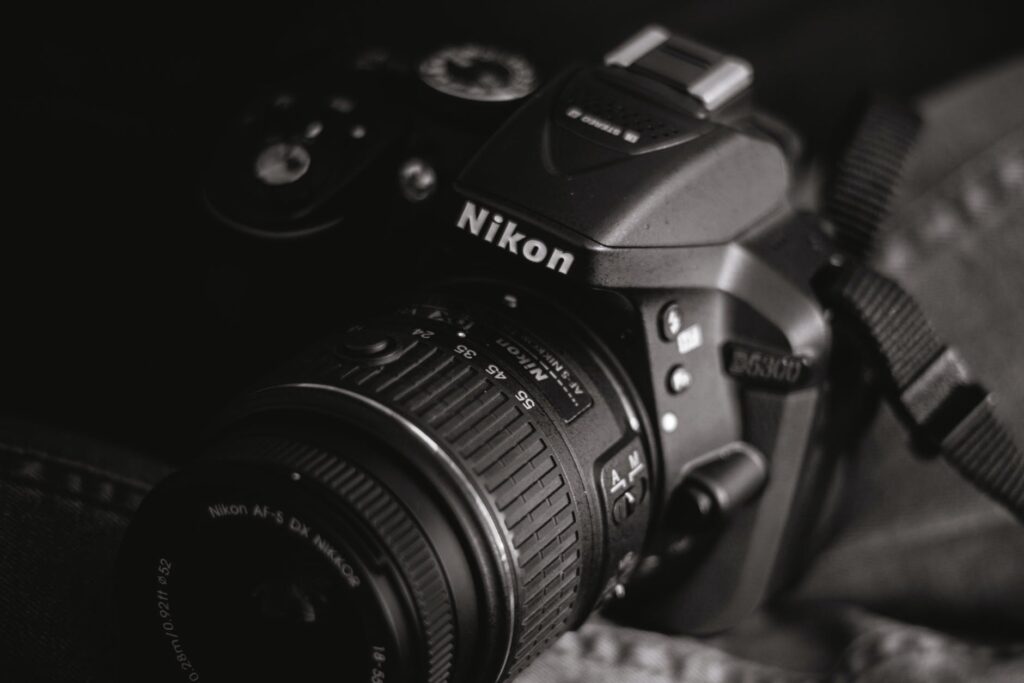
Nikon D5600 with AF-P 18-55 mm + AF-P 70-300 mm VR Kit with Bag and 16GB Memory Card Free.
Nikon D5600 is an excellent entry-level camera, and it gives you some additional features. Most of its fundamental features are pretty polished. The user interface is (for the most part) well designed for the target audience, its ability to keep moving subjects in focus is very good for its class, and, most importantly, it’ll readily take excellent photos. Despite only being a very modest upgrade to the D5500, the D5600 is still a very capable advanced entry-level DSLR.
What is the best DSLR camera in India under 40000 rupees?
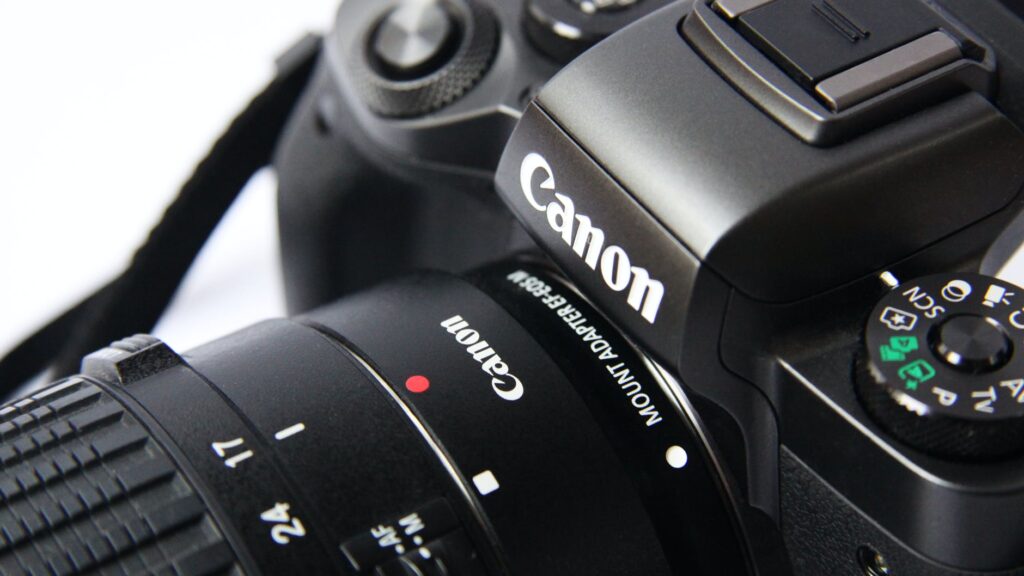
Canon EOS 1500D 24.1 Digital SLR Camera (Black) with EF S18-55 is II Lens, 16GB Card, and Carry Case.
It’s the best DSLR for beginners. It takes terrific quality photos getting from 24px.
What is the best DSLR camera in India under 30000 rupees?
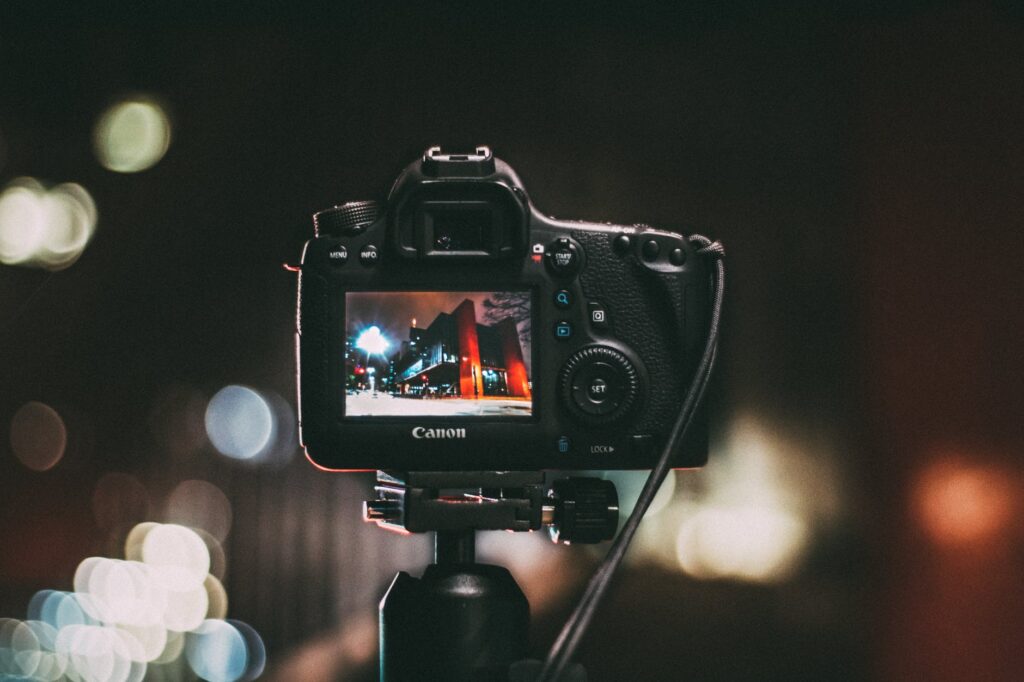
Canon EOS 3000D 18MP Digital SLR Camera (Black) with 18-55mm is II Lens, 16GB Card, and Carry Case.
This model can connect via Wi-Fi. It does not have a MIC output and speaker, but it has a built-in MIC. Though you can enhance the sound effects by editing and using external devices, I suggest you upgrade the commercial use model like M50 or EOS 200D. The rest is up to you.
What Is ISO Sensitivity?
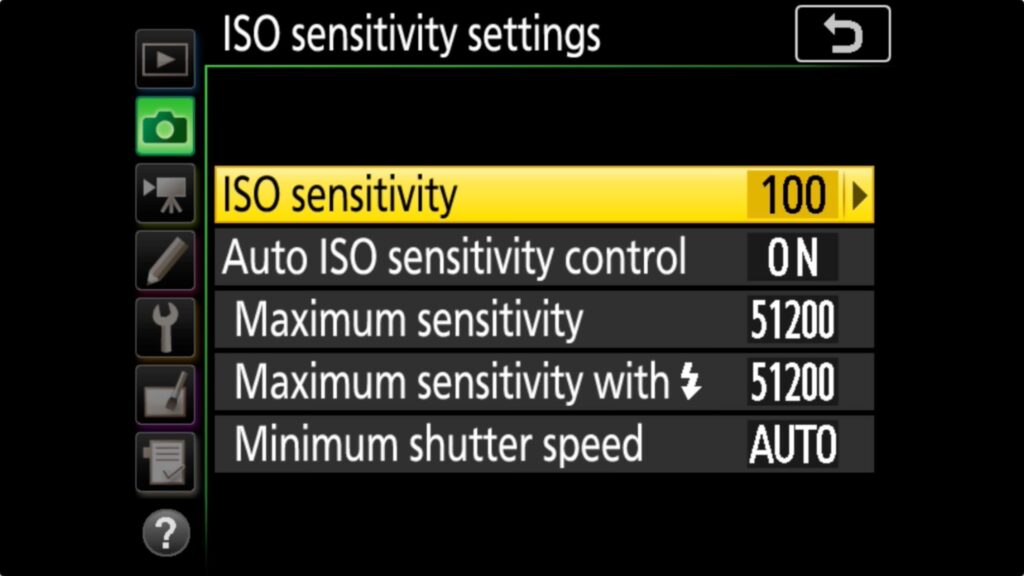
ISO sensitivity is a parameter that allows us to tell the sensor how much light it should collect. Imagers have a native sensitivity, which generally coincides with the lowest ISO value that we can enable from the camera controls. Still, it is possible to increase it by amplifying the photodiodes’ signal, which are the sensor’s tiny cells (each photodiode is responsible for collecting the information of a pixel).
When we plan a photograph, we should not consider sensitivity in isolation, in the same way, we did not do it when we talked about the aperture of the diaphragm and the exposure time. These three parameters act on the exposure, but their effect on the photograph’s finish is different.
The aperture of the diaphragm limits the depth of the field. The exposure time allows us to “freeze” the object we are photographing, achieve a sensation of movement and dynamism, and sensitivity is the perfect complement to the other two because it helps us balance exposure by acting on the amount of light the sensor will collect.
Why would someone need more than one lens?
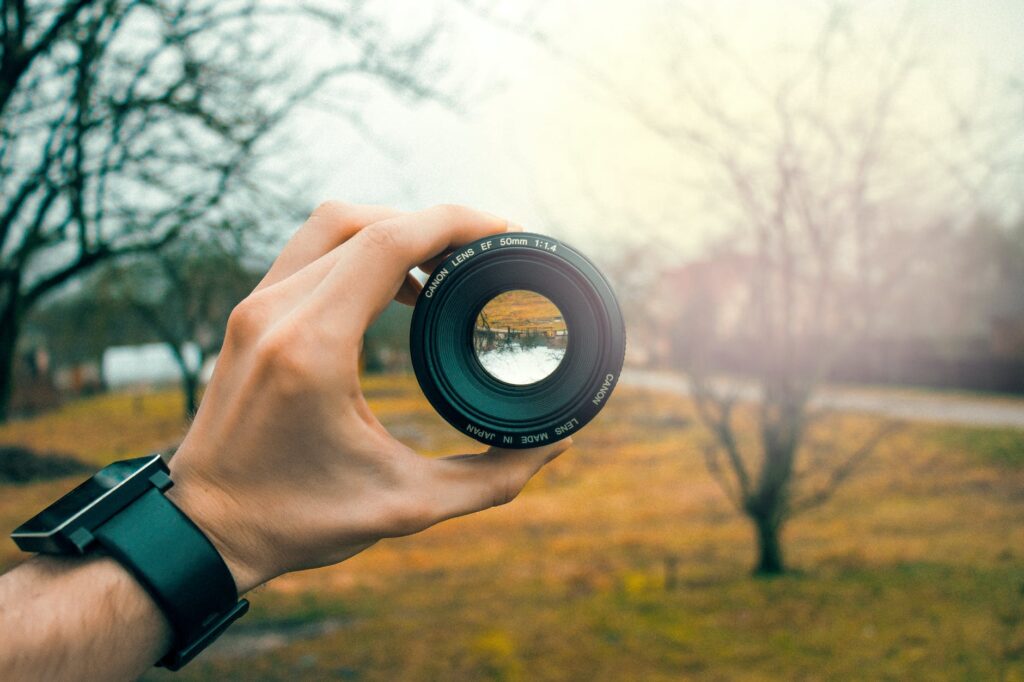
That would depend mostly on the type of photography a person does. For example, if you do landscapes and wildlife, one lens wouldn’t be enough for both. People use more than one lens because each of them can fill some need that others don’t.
Final Word
Without a doubt, DSLR is a great option, depending on your interests, but we decided to help you here. DSLRs offer excellent image quality, a large selection of lenses, and an all-day performance beneficial in many situations.
Use this guide and let your inspiration flow!
